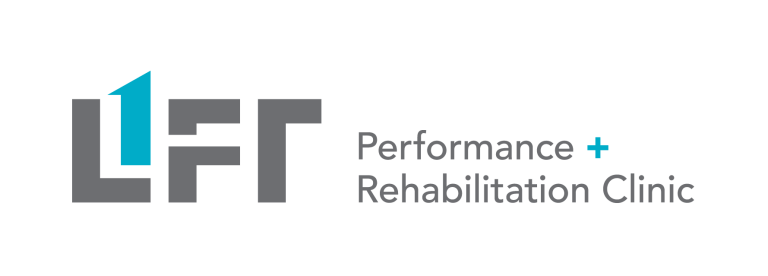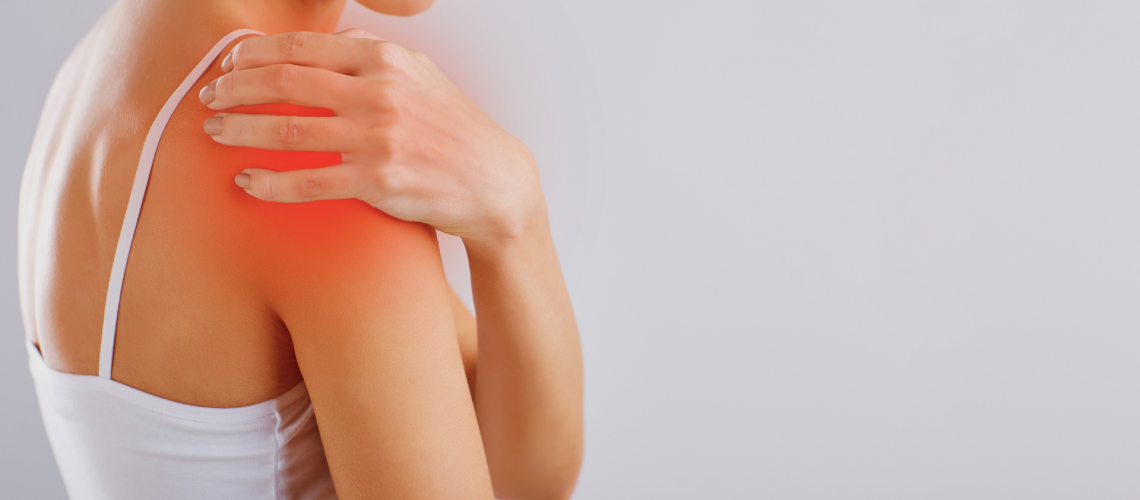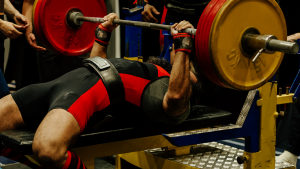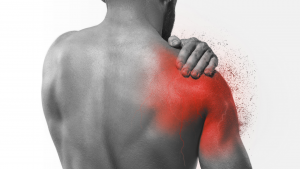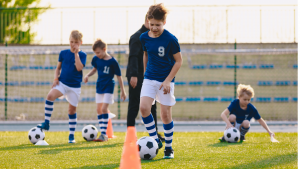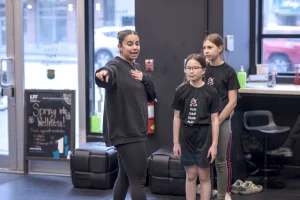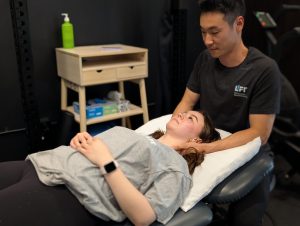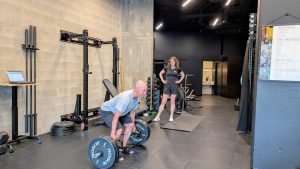What is the Rotator Cuff?
The rotator cuff consists of four muscles: supraspinatus, infraspinatus, teres minor and subscapularis. Together, they help to hold the shoulder in place as the arm moves around. If you imagine the shoulder joint to be like a golf ball and tee, the rotator cuff muscles help to keep the golf ball seated in the middle of the tee. If one of the muscles is torn, then the stability of the shoulder is lost, and the golf ball would end up sitting away from the centre of the golf tee.
The supraspinatus tendon along with a bursa (fluid filled sac that keeps parts of the shoulder from rubbing against each other), sit in a tight space in the shoulder called the subacromial space. A majority of shoulder pain is thought to originate from this subacromial space.
Types of Shoulder Pain and Shoulder Joint Injuries
Tendinitis / Tendinosis: acute overuse, chronic overuse leading to inflammation and/or change in structure of the tendon
Subacromial Bursitis: inflammation of the bursae which acts as lubricant for the tendons
Tear / Rupture: partial tear or full tear of the tendon off the bone
How Does A Shoulder Muscle Tear Happen?
– healthy muscle / tendon experiences an acute incident (fall on an outstretched hand, shoulder dislocation)
– older adult / degenerative muscle / overuse / repetitive strain injury (overhead work, throwing, volleyball spike, tennis serves, bench press)
A Shoulder Pain – Rotator Cuff Injury Symptoms
- Dull ache around the shoulder
- Can feel like pain in front of the shoulder
- Limited shoulder range of motion
- General weakness of shoulder
- Pinching pain in shoulder when reaching overhead
- Pain at rest
- Difficulty sleeping
How To Prevent Shoulder Pains – Rotator Cuff Injuries?
- Work with a physiotherapist to assess for weak links and to create an exercise program to improve mobility and stability of the shoulder joint
- Adjust the task at work to limit the amount of overhead work involved
- Schedule in more frequent breaks if a task requires constant work overhead (painting)
- Monitor and limit the amount of overhead work you’re doing during each training session (number of spikes per training, number of throws, number of serves)
Treatment of Rotator Cuff Related Shoulder Pain?
Here are some shoulder pain treatments for rotator cuff injuries:
Conservative treatment (non-operative)
- Shoulder strengthening and mobility program (6 – 12 weeks used in literature)
- Aims to reduce pain, increase function and enhance acitivity of daily living
- Mitigate potential long-term effects (further joint injury)
- According to literature conservative treatment can be effective for 73-80% of patients (reduce the need for surgery).
Injection:
- Corticosteroid: can possibly provide short term minimal pain relief in a small number of people with shoulder pain. The research appears to suggest that the pain relief is inconsistent and short lasting (up to 8 weeks)
Surgical options
- Rotator cuff repair to reattach rotator cuff tendon to the bone
- Decompression by increasing the size of the subacromial space
- When successful, it demonstrated satisfactory outcomes for pain and shoulder function
- Surgery appears to have better results for acute tears
- Poorer results for degenerative tendon
- Appears to have a high recurrent rate of tears
Physiotherapists at Lift Clinic Vancouver Help with Shoulder Pain and Rotator Cuff Injuries:
Shoulder injuries can be annoying. If you’re unsure of where your shoulder pain is coming from or if you’ve been diagnosed with a rotator cuff injury, our team at Lift can help guide your recovery from your shoulder injury to return to living your best life.
At Lift we’re a Vancouver Physiotherapy clinic that works as a team with massage therapists and chiropractors in working together to build you the best care for your needs. We believe in exceptional quality of care. Individualized 1-on-1 care with collaborative treatment planning is core to our approach.
References
Cook, T., & Lewis, J. (2019). Rotator Cuff-Related Shoulder Pain: To Inject or Not to Inject? Journal of Orthopaedic & Sports Physical Therapy, 49(5), 289–293. doi:10.2519/jospt.2019.0607
Edwards, P., Ebert, J., Joss, B., Bhabra, G., Ackland, T., & Wang, A. (2016). EXERCISE REHABILITATION IN THE NON-OPERATIVE MANAGEMENT OF ROTATOR CUFF TEARS: A REVIEW OF THE LITERATURE. International journal of sports physical therapy, 11(2), 279–301.
Paul Sealey, Jeremy Lewis. (2016) Rotator cuff tears: is non-surgical management effective?. Physical Therapy Reviews 21:3-6, pages 215-221.
